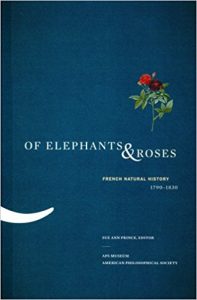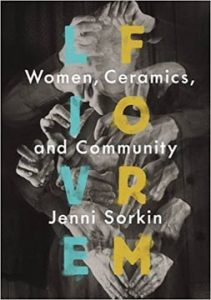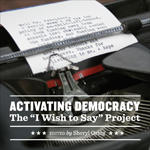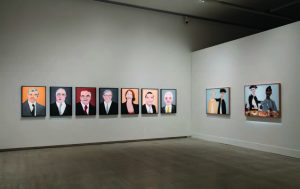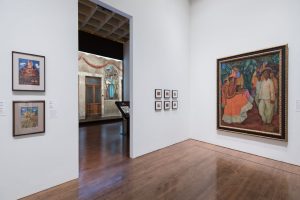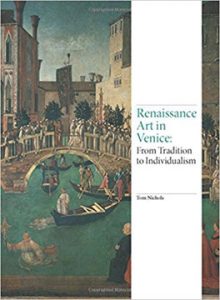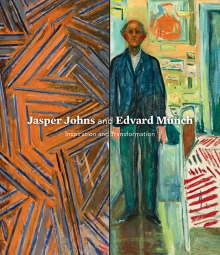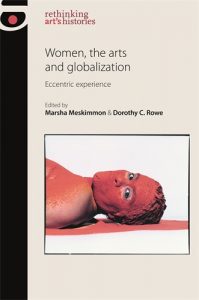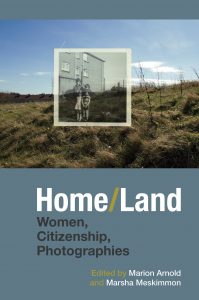CAA News Today
An Interview with 2018 Keynote Speaker Charles Gaines
posted by CAA — December 13, 2017
CAA 2018 Annual Conference Keynote Speaker Charles Gaines is a Los Angeles-based artist whose complex grid-work and mapping pulls from conceptual art and the field of philosophy. His work is currently on view at ICA Miami, at Cornell Fine Arts Museum, at kurimanzutto in Mexico City, and he has an upcoming show at Galerie Max Hetzler in Berlin. CAA media and content manager, Joelle Te Paske spoke with Charles about what he’s working on, his teaching at CalArts and Los Angeles in 2017, and if artists can change the world.
CAA’s Annual Conference Convocation, including the keynote address and presentation of the Awards for Distinction, will occur February 21, 6:00-7:30PM and will be livestreamed.
This interview has been edited for length and clarity.
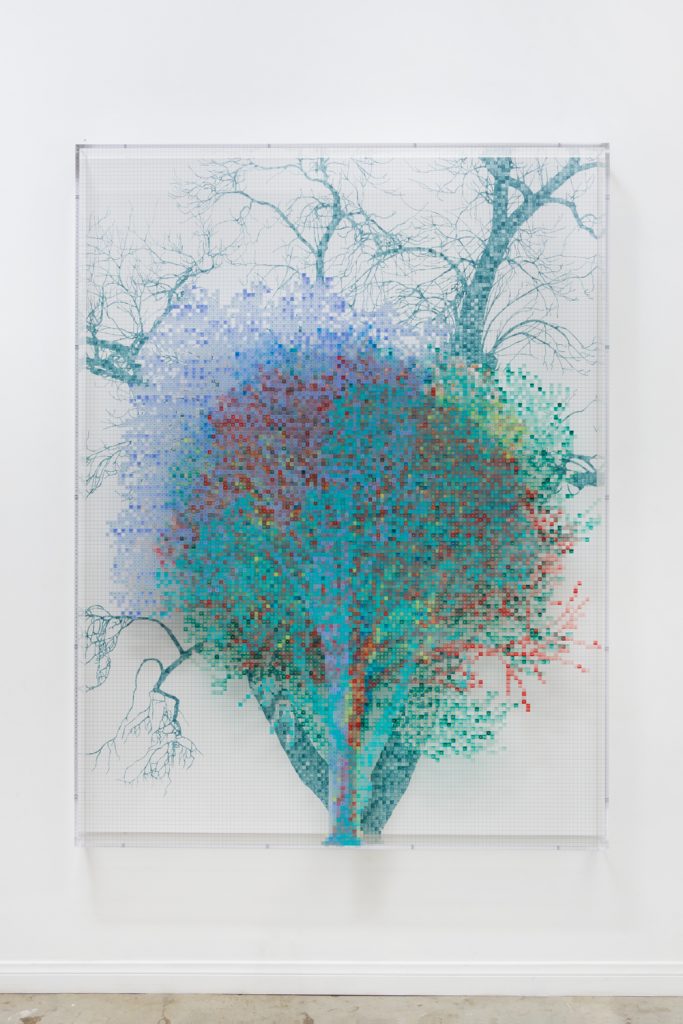
Charles Gaines, Numbers and Trees: Central Park Series 2, Tree #7, Maria, 2017. © Charles Gaines. Courtesy Paula Cooper Gallery, New York
Joelle Te Paske: I read the interview that you did for your Studio Museum exhibition in 2014 and you said: “I use systems in order to provoke the issues around representation.” I’m curious about how you’re thinking about systems right now in 2017.
Charles Gaines: I work with systems and structures, which results in the fact that the work itself is rule-based. My interest in it is really a suspicion about standard ideas of subjectivity. I felt that when I was in graduate school, the way we talked about art, seems that it was based on the assumption that the art object itself was a kind of access to the subjectivity of the artist. I got suspicious about [that] idea in modernism. That the purpose of art is, at its most essential core, a subjective practice, and if you take subjectivity out of it, you’ve eliminated or eviscerated the idea of art itself.
I wasn’t necessarily opposed to the concept of aesthetics itself, but again, when it became the principal and core purpose of a work of art, I had a lot of problems with that—to produce this aesthetic object—because that brings up issues of culture. And so, I was saying that aesthetic effects can be produced not by one’s intuition, but they can also be produced by rational strategies and intellectual, productive strategies, and one can have the aesthetic experience that’s a product of that. It’s a way of challenging the notion of how representation works in works of art.
JTP: It’s finding an alternative route into meaning, essentially. It gives you a different pathway.
CG: Yes.
JTP: Do you have a memory of first noticing a system—I’ve read that you’re interested in Buddhist teachings—that you hadn’t considered before?
CG: I was introduced to two books, one by Ajit Mookerjee which is called Tantra Art, and the other is Henri Focillon, The Life of Forms in Art. Buddhist works are interesting to me because the monks made works of art, but had no concept of the unconscious.
JTP: Interesting.
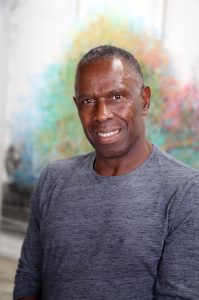
Charles Gaines. Photo: Katie Miller
CG: The personal subjectivity, they did not privilege that. But nevertheless, they have an art practice, made sculptures, drawings, and so it was interesting, because I had had to go outside the Western paradigm in order to discover that there are other ways of making work. And another thing that interested me about that is that the effect of that kind of process, this kind of sublime exhilarating experience, where you don’t actually have control over what you’re doing, because either the system has control of it or chance has control of it. And so you’re in this space that is to me way more interesting.
JTP: Yes, I’d say there’s a different kind of freedom to be found there.
If you could recommend one book to students or artists that they probably haven’t read, what would you recommend?
CG: Right now, books that deal with the postcolonial. Books that allow you to think about the relationship of art and culture, and the way that challenges assumptions of modernism. In my particular case, a very important book is Fred Moten’s [and Stefano Harney’s] The Undercommons, because of the way [Moten is] trying to negotiate what blackness means. It’s quite different from certain sociological or essentialist ideas of that subject.
JTP: Thinking about your role at CalArts, what are the changes that you’ve seen as part of the faculty?
CG: CalArts has managed to maintain, to some degree, the kind of reputation of an art practice that is not the standard. I was talking to some people about this the other day, and in particular Europeans generally think that CalArts is the most elite of art schools. They think that it’s among the best schools in the United States, but the reason why is because the school privileges ideas and challenges notions of certain standard practices. There’s a general suspicion of the idea of mastery.
JTP: That’s beautifully put.
CG: I mean, a lot of schools have developed programs or disciplines called new genres. So they’ll have painting, drawing, sculpture, printmaking, and the new genres. And so new genres is, I think, supposed to deal with the issues that are conceptually driven in works of art. You know, in particular, the avant-garde.
CalArts was invented with that kind of idea, and so I still think it’s a bit radical. Which blows me away actually, because I still get into discussions with other professionals, not so much in the art world, but certainly in academia, about whether the role of mastery informs curriculum. In our Masters program, we get the students who never really challenged the idea of mastery. In the 1970s, 80s, and 90s, there was the idea of art as an avant-garde practice; it wasn’t something that was controversial. It’s sort of a weird reversal of history, that the idea of art as an avant-garde practice is becoming more and more provocative. Particularly in the way people are thinking about educational systems and curriculum development and so forth. It’s the idea that they haven’t really come into the framework experienced in critiquing the idea of mastery with respect to works of art. I guess that’s the largest change that I’ve seen.
JTP: Yes, I think that your comment about the longer view of the history and the purpose of art is interesting, because history repeats itself and reconfigures itself.
When you’re working with students, what are you most excited about?
CG: In terms of what I enjoy in the experience of teaching at CalArts, we are lucky to get really good students. And the graduate students tend to be a little older and so, you wind up having the richest seminars—critical discussions about works of art, where the teaching goes two ways. I learn from them, they learn from me.
JTP: That’s terrific.
CG: You know, that keeps it quite vibrant and alive. There is a transition that the art students have to go through to get to that point where their criticality can reach a more sophisticated level. Their first year, [that] tends to be pretty traumatic for them. The dismantling of a lot of their assumptions about art. But through this process, they segue into the ability to be quite intelligent and quite interesting [in] the way they ultimately critique ideas and each other’s work.
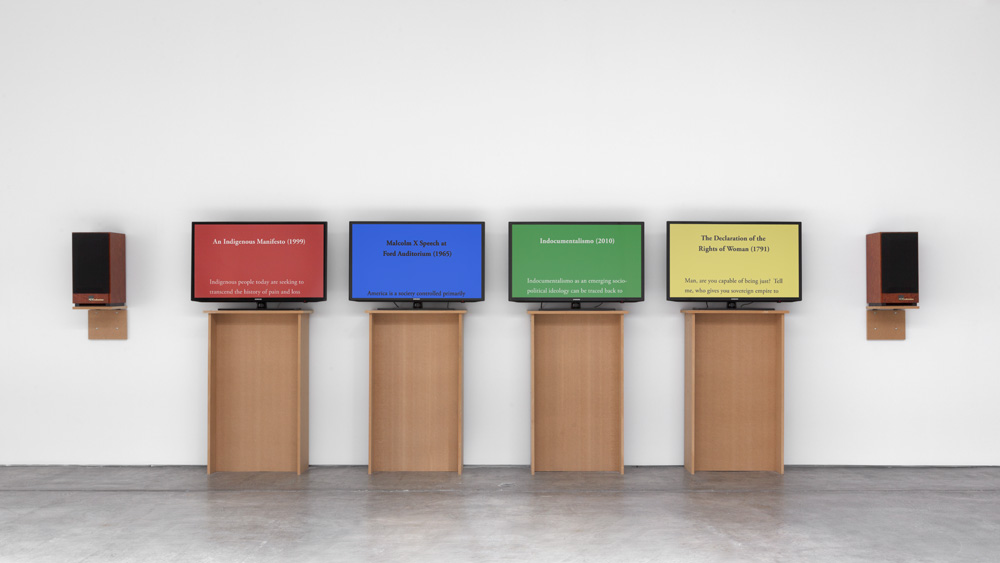
Charles Gaines, Manifestos 2 (Installation), 2013. Courtesy of the Museum of Modern Art, New York. Photo: Steven Probert © Charles Gaines. Courtesy Paula Cooper Gallery, New York
JTP: I’m curious too about LA. I know that you’re a longtime resident of the city—if you had to choose one thing for people coming to the conference, what you would recommend?
CG: LA has a remarkable list of museums, mostly contemporary art museums and modern art museums. Nobody should miss that. The art scene in LA is just generally interesting. I can also easily make a plug, because I’m on the board of the new ICA LA (Institute of Contemporary Art, Los Angeles). People should make sure not to miss the ICA LA.
JTP: Thank you, that’s great. I know too that you’ve been part of the debate in Boyle Heights about art spaces and gentrification, and there’s been dialogue on all sides about it.
CG: I got caught up in the whirlwind of that. In this particular instance, the artists who’ve been moving into Boyle Heights in the last five or 10 years or so formed an alliance with a particular group of Latino artists to form a new strategy to fight gentrification. I was sort of upset by the fact that they’re attacking some very progressive alternative spaces.
In Boyle Heights, there’s a legitimate effort to fight gentrification that follows a history of certain strategies of fighting it that are unique to minority communities. In other words, Boyle Heights is a depressed community and was formed not because Latinos and Black people wanted to live there; it was formed because of redlining. And so those people, they want to stay in Boyle Heights, but they want it improved. And so their strategy against gentrification includes finding ways where they can increase their voices in terms of how this plays itself out. But this other group does not want any improvement. They just want to stop it.
They’re not interested in the idea of improvement, so what I said was that the artists who moved to Boyle Heights must recognize that they’re the first stage of gentrification. And I said that they were appropriating and colonizing the interests of the minority community.
JTP: You’re saying development could be good, it should be driven by the people who have been living there. They should have input and they should be guiding it.
CG: Whether it’s good or not, it’s inevitable.
JTP: It’s inevitable; okay that is a good distinction.
CG: There isn’t history where these kind of things, where gentrification was essentially stopped. What happened is that it was controlled.
JTP: We definitely want people coming from out of town to be aware of what is happening in Los Angeles. It’s helpful to hear your perspective, because you’ve lived there a long time and you’ve been active and involved, so thank you.
By the way, have you attended CAA conferences in the past?
CG: Absolutely. In fact, I’ve even been on a couple of panels. Several times in the past. There’s such a wide variety that’s available to see. I think it is very, very important to maintain that diversity and I have been noticing the increase in social and cultural issues.
Joelle: That’s definitely something we’re working on here at CAA.
I do have one more question, and it’s my favorite. Please feel free to answer it however you’d like. Do you think artists can change the world?
CG: I mean, it’s a cause and effect thing. Artists can change our ideas about art. But artists can also play a role in changing our ideas about society. They can play a role in that, like the activism that artists [did] in the 1970s helped to increase the number of women and minorities in art. And that comes from not only artists dealing with politics, but at the same time culture in general, a critique of male dominance and white male dominance, so artists play a role with other forms of social activism in changing things. It’s not like you can make a work of art and everybody’s just like “Oh, okay, I feel differently now.”
I think that people who make the argument that artists can’t change things—the phrase itself makes no sense to me. But the people who make that argument make it under the assumption—this is why Fred Moten’s The Undercommons is such an important book—of a simplistic notion about what politics is and how it works.
JTP: I agree. It’s my favorite question, because I very much believe that artists play a role in doing so.
This has been a rich discussion, thank you for taking the time. Is there anything else that you’d like to add in for people reading this?
CG: It’s a pleasure talking, and I’m looking forward to the event. I don’t know what I’m going to talk about yet, but I’ll think of something.
JTP: Yes, from this conversation, I have a feeling you definitely will.
Action Needed! Protect Net Neutrality and the Open Internet
posted by CAA — December 13, 2017
Tomorrow, the Federal Communications Commission (FCC) is voting to repeal net neutrality—the idea that internet service providers should treat all online content equally without blocking or slowing down specific websites or allowing companies to pay for preferential treatment.
Net neutrality is important to intellectual freedom, freedom of speech, and access to information. If access to the internet becomes regulated by the ability to pay higher fees for certain types of content, many libraries, museums, non-profit organizations, and activist groups will be forced to choose between providing crucial services and providing full access to the internet.
Click here to protect net neutrality
Read more on the issue:
Net Neutrality Rollback Concerns Colleges (Inside Higher Ed)
Why Does Net Neutrality Matter to Libraries? (ALA American Library Association)
Net Neutrality: Why Artists and Activists Can’t Afford to Lose It (New York Times)
News from the Art and Academic Worlds
posted by CAA — December 13, 2017
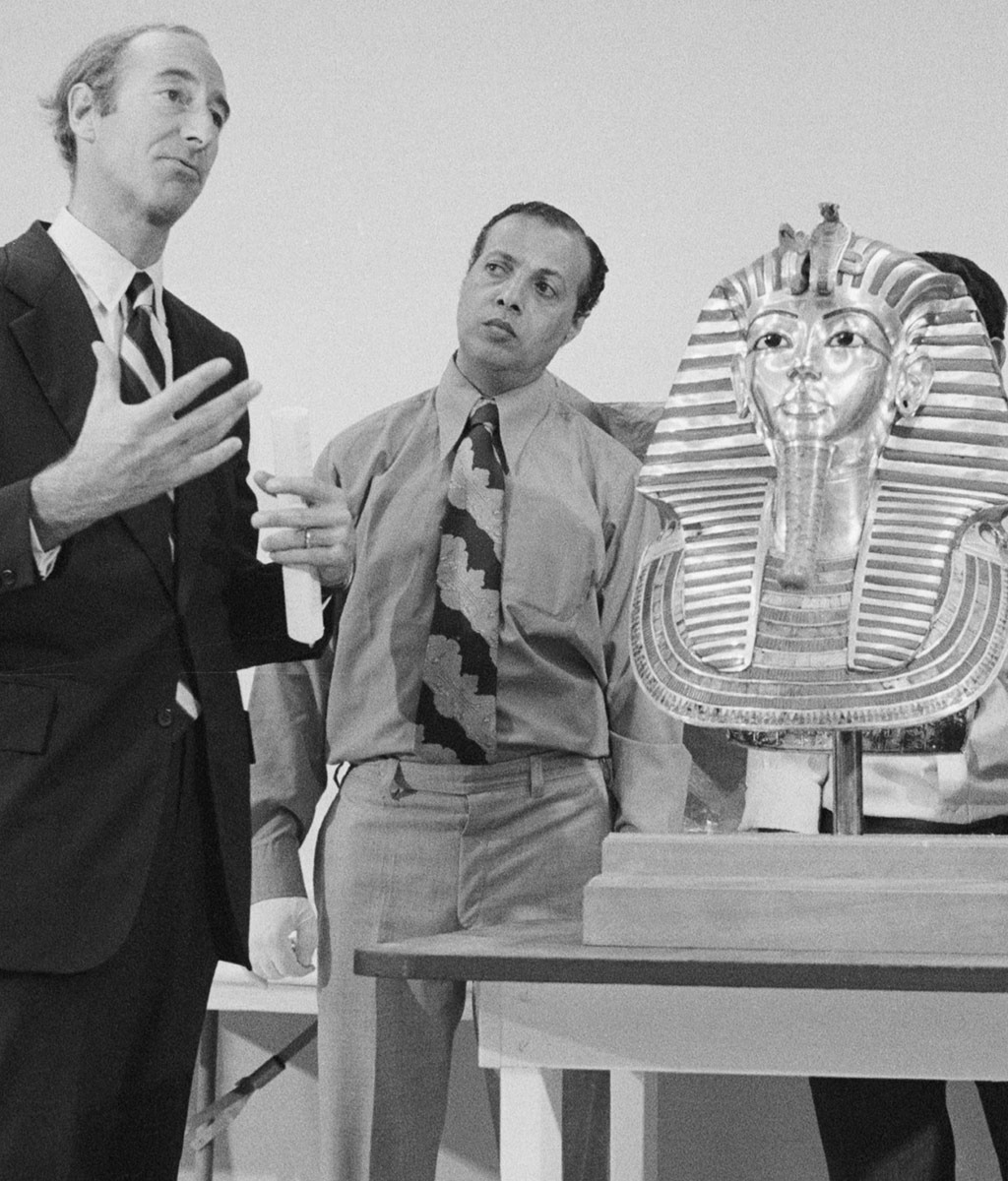
“The Director and the Pharaoh: How Thomas Hoving Created the Museum Blockbuster.” Photo from Bettmann Archive, via Vulture.
Each week CAA News summarizes articles, published around the web, that CAA members may find interesting and useful in their professional and creative lives.
How Medieval Manuscript Makers Experimented with Graphic Design
Designing English: Graphics on the Medieval Page at the University of Oxford considers how early English manuscripts approached graphic design. (Hyperallergic)
Is Culture in the Americas in Big Trouble? Arts Leaders Say Yes
Takeaways from a recent panel with artist Jordan Casteel, Brooklyn Museum director Anne Pasternak, Contemporary Arts Museum Houston director Bill Arning, and writer and photographer Teju Cole. (Artsy)
Archaeologists Are Using Drones to Map Ancient Venezuelan Rock Art
The Cotúa Island-Orinoco Reflexive Archaeology Project is mapping some of the world’s best-known petroglyphs in unprecedented detail. (Artnet News)
Basel Baby: A Local’s First Journey Into the Madness of Miami Art Week
“When you grow up here, you see Basel as a kind of abstract happening.” (Miami New Times)
Documenting Nostalgia on Route 66
Filmmaker and photographer Phil Donohue shot scenes along the famed US highway to explore what we long for and leave behind. (CityLab)
The Director and the Pharaoh: How Thomas Hoving Created the Museum Blockbuster
The Treasures of Tutankhamun, which landed at the Metropolitan Museum in 1978 at the end of a six-city American tour, abounded in riches of every kind. (Vulture)
Call for Contributions to RAAMP (Resources for Academic Art Museum Professionals)
posted by CAA — December 12, 2017
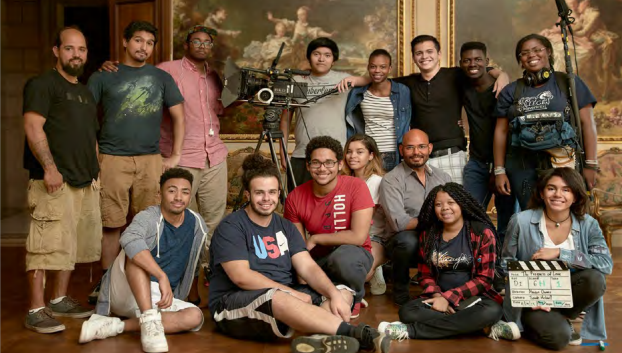
Honor students from The Cinema School at The Frick Collection, 2016, from AAMD’s “Next Practices in Diversity & Inclusion” PDF in RAAMP. Photo: Michael Bodycomb
Given the spirited discussion taking place on a number of curatorial listservs and websites, RAAMP (Resources for Academic Art Museum Professionals) invites submissions to add to its publicly accessible online archive for individuals working in academic art museums.
Examples include museum strategic plans, campaigns for outreach to campus communities, and strategies for diversity and inclusion in the academic art museum, and include PDFs, links, videos, and more.
Click here to submit resources.
You can also browse the existing resources, submit updates, or join the conversation on Humanities Commons.
What is RAAMP?
RAAMP serves to promote scholarship, advocacy, and discussion related to the role of academic art museums and their contribution to the educational mission of their parent institutions. To this end, it functions as a publicly accessible online repository; it collects, stores, and shares resources.
RAAMP is a project of the CAA with support from The Andrew W. Mellon Foundation.
Explore the 2016 Dissertation List
posted by CAA — December 11, 2017
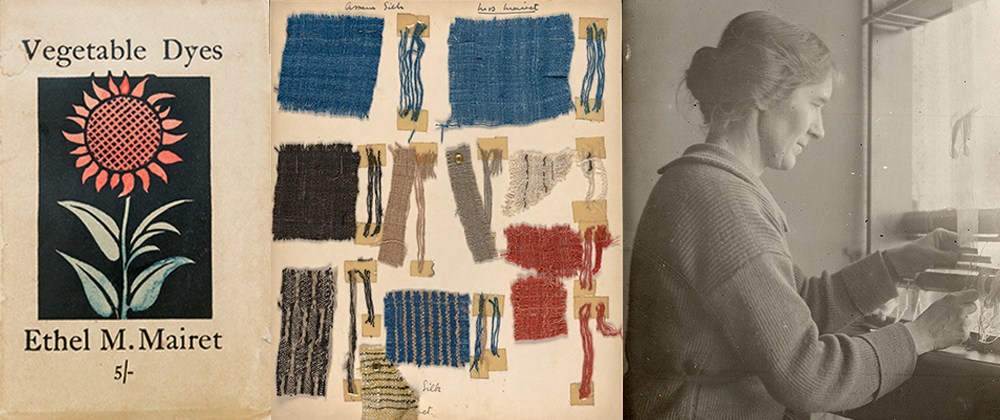
Dissertations in Progress on Decorative Arts, 2016: Behan, Antonia, “‘The Brain of the Machine’: Ethel Mairet’s Textile Laboratory” (Bard Graduate Center, P. Stirton) Image: Ditchling Museum of Art + Craft
Once a year, each institution granting the PhD in art history and/or visual studies submits dissertation titles to CAA for publication.
caa.reviews has now published the authors and titles of doctoral dissertations in art history and visual studies—both completed and in progress—from American and Canadian institutions for calendar year 2016.
You can browse by listing date or by subject matter. Each entry identifies the student’s name, dissertation title, school, and advisor. Click here to explore.
Sarah G. Sharp and Kara Hearn
posted by CAA — December 11, 2017
The weekly CAA Conversations Podcast continues the vibrant discussions initiated at our Annual Conference. Listen in each week as educators explore arts and pedagogy, tackling everything from the day-to-day grind to the big, universal questions of the field.
This week, Sarah G. Sharp, assistant professor at University of Maryland and faculty of the Art Practice MFA Program at SVA in New York, and Kara Hearn, video artist and assistant chair of Film and Video at Pratt Institute, discuss video training for artists across disciplines.
New in caa.reviews
posted by CAA — December 08, 2017
Katie Hornstein discusses Of Elephants & Roses: French Natural History, 1790–1830 by Sue Ann Price. Read the full review at caa.reviews.
K.L.H. Wells reviews Live Form: Women, Ceramics, and Community by Jenni Sorkin. Read the full review at caa.reviews .
Christina Fail writes about Activating Democracy: The “I Wish to Say” Project edited by Sheryl Oring. Read the full review at caa.reviews.
Kate Warren writes on TarraWarra Biennial 2016: Endless Circulation by Victoria Lynn and Helen Hughes. Read the full review at caa.reviews.
Monica Bravo takes a look at Paint the Revolution: Mexican Modernism, 1910–1950 edited by Matthew Affron, Mark A. Castro, Dafne Cruz Porchini, and Renato González Mello. Read the full review at caa.reviews.
Joseph Hammond reviews Renaissance Art in Venice: From Tradition to Individualism by Tom Nichols. Read the full review at caa.reviews.
Akela Reason writes on Icon of Modernism: Representing the Brooklyn Bridge, 1883–1950 by Sarah Kate Gillespie, Janice Simon, Meredith E. Ward, and Kimberly Orcutt. Read the full review at caa.reviews.
Kathleen Chapman reviews Jasper Johns and Edvard Munch: Inspiration and Transformation edited by John B. Ravenal. Read the full review at caa.reviews.
Jane Chin Davidson discusses Women, the Arts and Globalization: Eccentric Experience edited by Marsha Meskimmon and Dorothy C. Rowe and Home/Land: Women, Citizenship, Photographies edited by Marion Arnold and Marsha Meskimmon. Read the full review at caa.reviews.
Associate Editor for Digital Publications
posted by CAA — December 08, 2017
Please note: This position has been filled. Thank you.
College Art Association
50 Broadway, Fl 21
New York, NY 10004
Date posted: December 6, 2017
Position Title: Associate Editor for Digital Publications
Supervisor: Director of Programs and Publications
Full-time, salaried with benefits
Founded in 1911, the College Art Association (CAA) is the preeminent international leadership organization in the visual arts, promoting the field through intellectual engagement, advocacy, programs, and a commitment to the diversity of practices and practitioners. Each year, CAA offers an Annual Conference, publishes two scholarly journals and offers a variety of other programs. Visit CollegeArt.org for a complete description of programs and offerings.
CAA has more than 9,000 members worldwide. The majority of members are curators, art historians, scholars, visual artists, and designers.
Responsibilities:
The Associate Editor for Digital Publications reports to the Director of Programs and Publications. The Associate Editor serves principally as production manager and copyeditor for Art Journal Open, assists in production of caa.reviews, and provides support for other digital publication projects.
The Associate Editor works closely and collaboratively with colleagues in all departments within CAA as well as with representatives from the Board of Directors, editorial boards, and Publications Committee, to establish priorities and to ensure the highest standards of publishing. The Associate Editor acts as the liaison for CAA publications to the association’s communications and marketing department; skills in social media and copywriting are essential.
Art Journal Open
- Responsibilities include, but are not limited to serving as production manager working closely with the Web Editor to produce essays and artists’ projects for the website.
- Creates and maintains production schedules, including deadlines for submissions, editing, proofreading, and publishing.
- Communicates regularly with the Director of Programs and Publications, Editorial Director, and Web Editor about the progress of web projects and texts.
- Reviews text, image, video, and other files submitted for publication; checks permissions submitted by authors; and obtains replacement files when necessary
- Copyedits, fact-checks, and proofreads manuscripts; manages editorial process for contributors
- Designs and implements layouts for all projects published
- Prepares manuscripts and images for upload
- Uploads and publishes all content
- Manages and maintains functionality and administrative aspects of the site including contracts, permissions, and payments
Programs and Publications Department
- Assists with maintenance of reviews website
- Works on multimedia projects for reviews using the Scalar platform
- Works with Publications and Programs Editor to upload and publish content on reviews on a weekly basis
- Works collaboratively with CAA’s communications, marketing, and membership department to promote content published across all CAA’s publications, including preparing marketing copy and strategizing; works with CAA’s Media and Content Manager on preparing content for social media
- Collaborates with Grants and Special Programs Manager on grant programs and applications
Required Qualifications:
- Bachelor’s degree, preferably in an art related field
- A minimum of 2 years experience in editorial production; a background or interest in contemporary art editing is a plus
- Working knowledge and experience with WordPress or working with another CMS system to publish online. Familiarity with PHP development is a plus
- Experience with HTML/CSS, Photoshop, Vimeo, and social media platforms including Instagram, Facebook, and Twitter
- Strong English-language and copyediting skills (Chicago Manual of Style)
- Excellent communication, organizational, and time-management skills
- Excellent attention to detail and interpersonal skills
- Demonstrated ability to understand production scheduled, meet deadlines and quality expectations
- Demonstrated ability to work independently and collaboratively as a member of a team
- Flexibility, creativity, and initiative
- Pleasant demeanor
- Proficiency with Microsoft Word and Excel
- Ability to work resourcefully and adapt to changing needs within the department
Interested individuals should submit a cover letter and resume to Tiffany Dugan, Director of Programs and Publications, via email (with “Associate Editor for Digital Publications” and applicant’s last name in subject line) at TDugan@collegeart.org. No telephone inquiries will be accepted. Applications accepted until position is filled. Please include the names and contact information for three references who can speak to your qualifications and ability to perform the tasks requested.
The College Art Association is an equal opportunity employer and considers all candidates for employment regardless of race, color, sex, age, national origin, creed, disability, marital status, sexual orientation, gender expression, or political affiliation.
News from the Art and Academic Worlds
posted by CAA — December 06, 2017
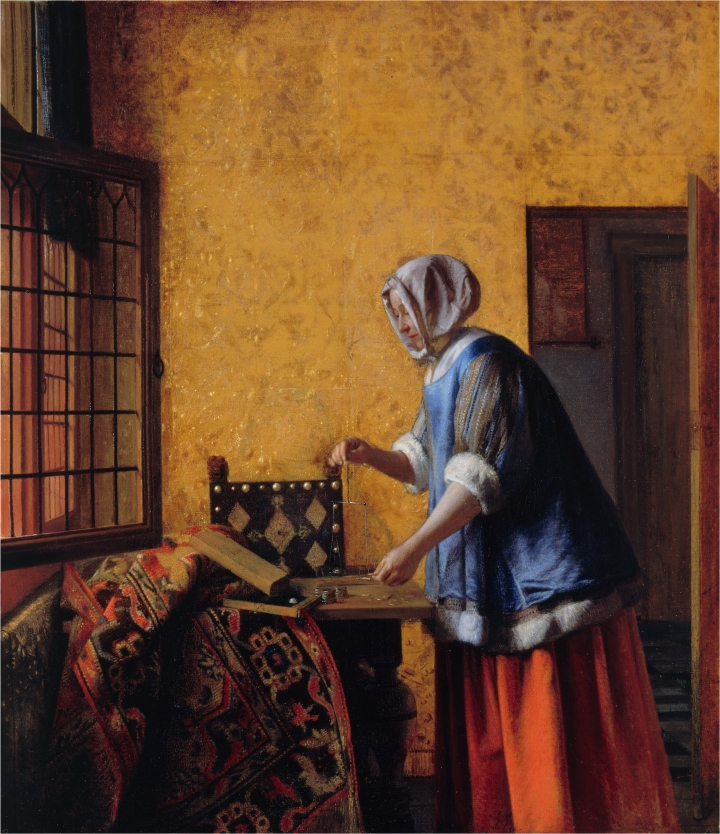
Pieter de Hooch, Woman Weighing Coins (c. 1664), oil on canvas (image courtesy of the Staatliche Museen zu Berlin, Gemäldegalerie, property of Kaiser Friedrich Museumsverein), included in Vermeer and the Masters of Genre Painting.
Each week CAA News summarizes articles, published around the web, that CAA members may find interesting and useful in their professional and creative lives.
Academics and Artists Weigh In on Controversial City Monuments
Over 120 academics and artists have urged Mayor Bill de Blasio to remove five public monuments and markers they say celebrate racism. (New York Times)
The High Life of Vermeer and his Contemporaries
An exhibition at the National Gallery of Art reinserts Vermeer into the tradition in which he worked, both demystifying his paintings and lending force to his take on the genre. (Hyperallergic)
Seven of the Met’s Tiniest Masterpieces
From a 19th-century necklace of miniature portraits to an ancient Egyptian scarab, here are seven of the Met’s tiniest works of art. (Artsy)
Teenagers in Maryland Create a Pop-Up Museum to Explain Their Lives and Struggles
The Museum of Contemporary American Teenagers (MoCAT) is scheduled to open today. (Washington Post)
A Whale’s Tale: Longest Painting in North America Restored
A museum has restored the longest painting in North America so it can share the story of American whaling. (Associated Press)
UK Museums’ Right to Charge Image Fees is Called into Question
A campaign for institutions to free up photographs of out-of-copyright works is backed by legal experts. (The Art Newspaper)
Meet the 2018 Travel Grant Recipients
posted by CAA — December 05, 2017
CAA offers Annual Conference Travel Grants to graduate students in art history and studio art and to international artists and scholars. Meet this year’s recipients below.
CAA TRAVEL GRANT IN MEMORY OF ARCHIBALD CASON EDWARDS, SENIOR, AND SARAH STANLEY GORDON EDWARDS
Established by Mary D. Edwards with the help of others, the CAA Travel Grant in Memory of Archibald Cason Edwards, Senior, and Sarah Stanley Gordon Edwards supports women who are emerging scholars at either an advanced stage of pursuing a doctoral degree or who have received their PhD within the two years prior to the submission of the application.
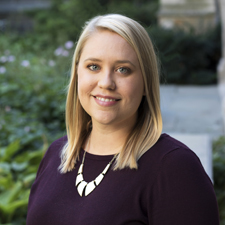
Ashley Dimmig, University of Michigan
Woven Spaces: Building with Textile in Islamic Architecture
“Into the Fold: Nineteenth-Century Ottoman Fabric (and) Architecture”
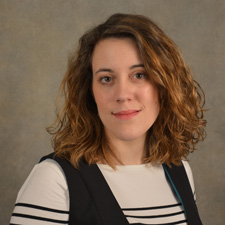
Sandra Gomez Todó, University of Iowa
Unruly Women in Early Modern Art and Material Culture
“‘But ev’ry Woman is at Heart a Rake:’ Sartorial Agency and the Disruptive Female Masquerader in Lady Elizabeth Chudleigh’s Iphigenia”
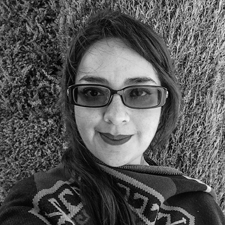
Tania Vanessa Alvarez Portugal
De-centering the “Global Renaissance.” Encounters with Asia and the Pacific Rim
“A Mexican Tarot? A 1583 Deck of Mexican Playing Cards”
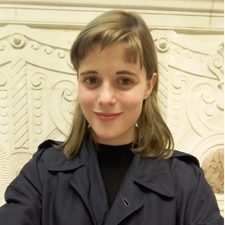
Emilie Anne-Yvonne Luse, Duke University
Avant-Gardes and Varieties of Fascism
“A Modern Pax Romana: Christian Universalism, Fascism and the Neo-Humanist Aesthetic of Waldemar George”
CAA GRADUATE STUDENT CONFERENCE TRAVEL GRANTS
CAA awards Graduate Student Conference Travel Grants to advanced PhD and MFA graduate students as partial reimbursement of travel expenses to the Annual Conference.
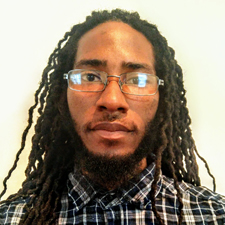
Mensah Bey
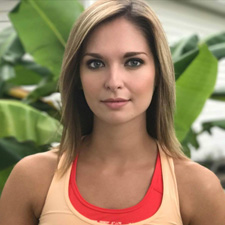
Allison Renée Dunavant
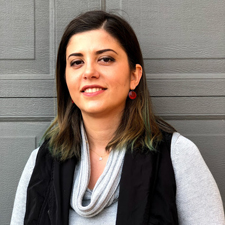
Ezgi Isbilen
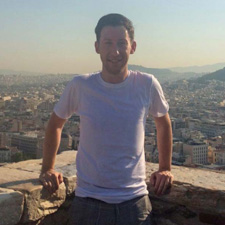
Steven Lemke
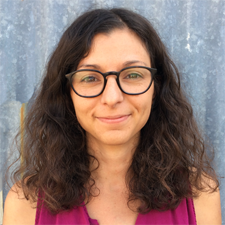
Kimberly Lyle
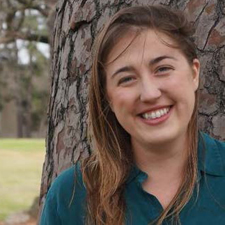
Kelly McClinton
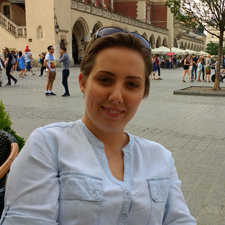
Maja M. Michaliszyn
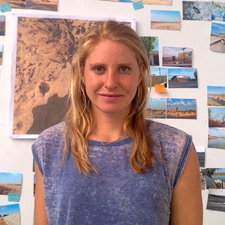
Hollis Moore
CAA INTERNATIONAL MEMBER CONFERENCE TRAVEL GRANTS
CAA awards the International Member Conference Travel Grant to artists and scholars from outside the United States as partial reimbursement of travel expenses to the Annual Conference.
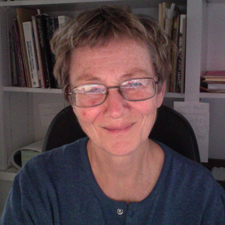
Pamela Gerrish Nunn
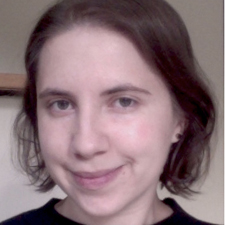
Erin McClenathan
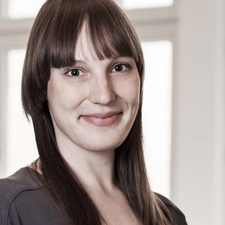
Friederike Schäfer
SAMUEL H. KRESS FOUNDATION CAA CONFERENCE TRAVEL FELLOWSHIP FOR INTERNATIONAL SCHOLARS
Recognizing the value of first-hand exchanges of ideas and experience among art historians, the Kress Foundation is offering support for international scholars participating as speakers at the 2018 CAA Annual Conference. The scholarly focus of the papers must be European art before 1830. Kress recipients will be announced in January 2018.
CAA-GETTY INTERNATIONAL PROGRAM
Every year since 2012, the CAA-Getty International Program has brought between fifteen and twenty art historians, museum curators, and artists who teach art history to attend CAA’s Annual Conference. This program is funded on an annual basis by the Getty Foundation. Click here to meet the CAA-Getty International Program participants.




